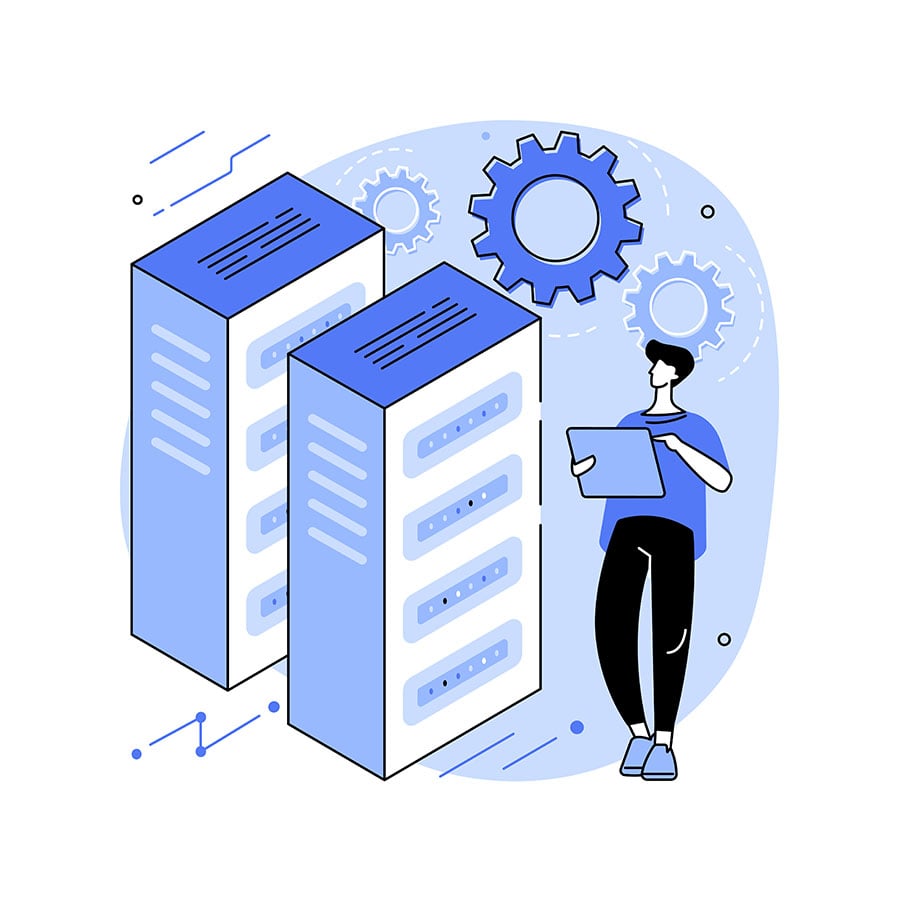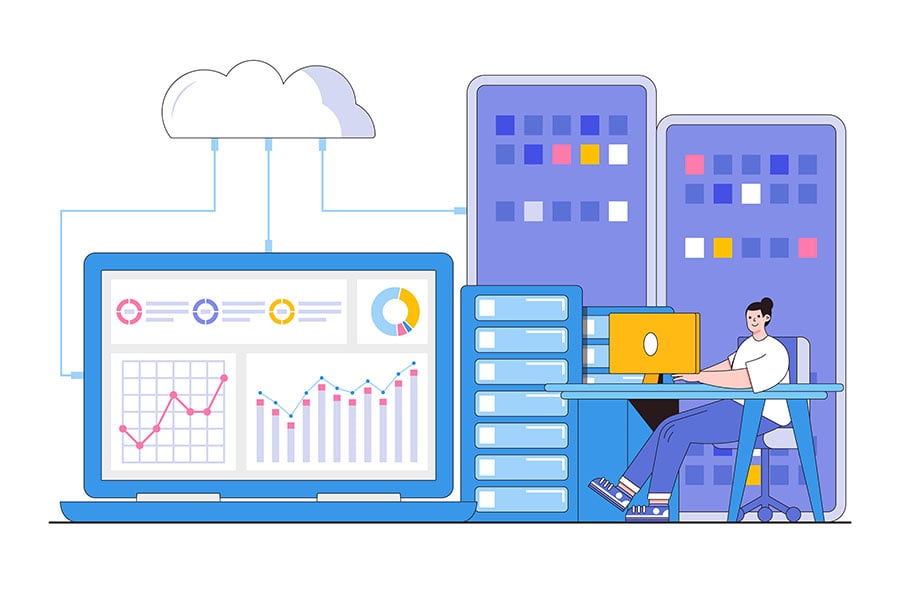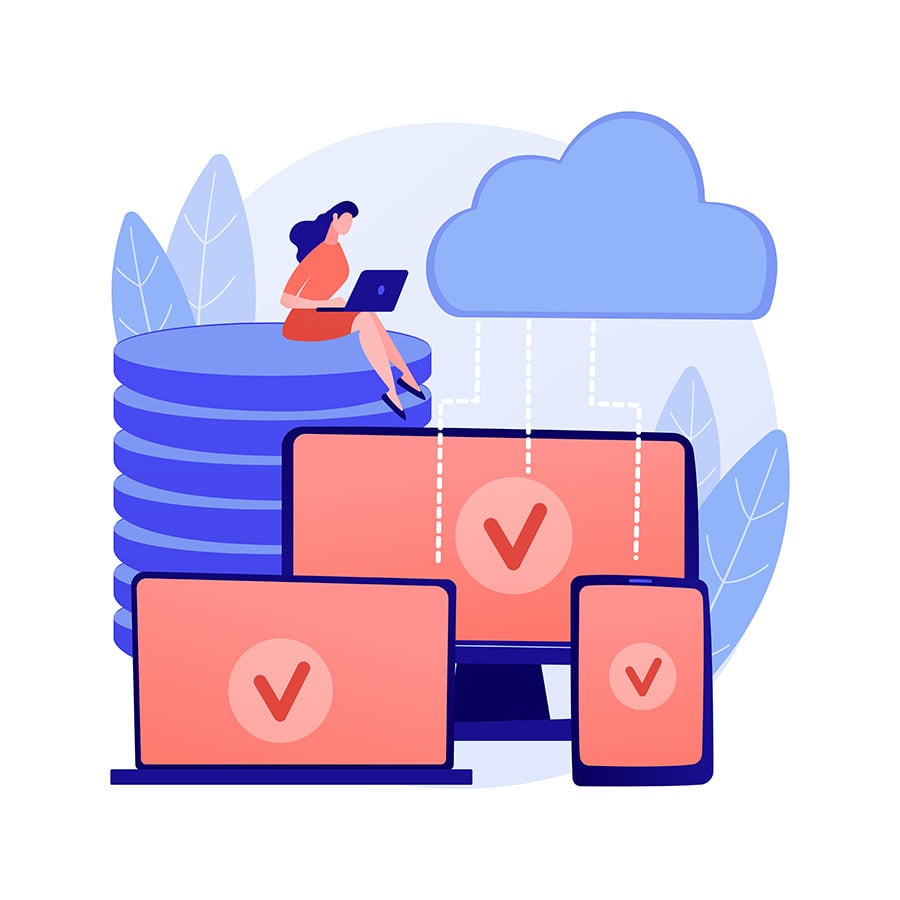A highly scalable database meets the demands of a growing business without performance issues. These databases can handle large amounts of data, are cost-effective, and offer flexibility.
The idea behind this kind of scalable database is to store and manage different types of data. This makes it easier for users to access information from various sources and keep it organized. The scalability of these databases allows businesses to adopt new technologies and adapt quickly to market changes.
What is a Highly Scalable Database?
A highly scalable database is designed to handle increasing workloads efficiently by expanding storage, processing power, or both. Scalability ensures that as your business grows, your database maintains speed, reliability, and security.
Database Scaling Methods

There are two database scaling methods that could help you meet your needs: horizontal and vertical scaling.
Horizontal Scaling
Horizontal scaling refers to adding additional nodes or machines in your infrastructure to cope with new demands. This type of DB scaling can be achieved by adding a database server. This can enhance the ability to handle increased traffic through replication or sharding.
Some of the downsides of automating certain processes may be the added complexity and lengthy time investment. You must decide when to use which machines and how they'll work with one another. Horizontally scaling databases increases resiliency, database performance, and scalability by way of multiple copies at the same time.
Vertical Scaling
Vertical scaling describes the act of adding additional resources to a system so that it meets demand. Vertical scaling can refer to adding more power to your current machines, such as upgrading CPUs in a server. This type of database scalability can be done by improving the memory, storage, or network speed.
One way to scale a server is by replacing it with a newer one or moving some of the workload. This is a simple way to add capacity, but it requires an investment in resources.
Here’s a horizontal scaling vs. vertical scaling comparison:
| Scaling | Vertical Scaling |
Horizontal Scaling |
| Structure | Structured (Tables, Schema) | Flexible (JSON, Key-Value, Graph) |
| Use Case | Transaction-heavy apps (eg. baking) | Big data, real-time apps, (IoT, social media) |
| Performance | Optimized for complex queries | Faster for large scale distributed data |
| Example | MySQL, PostgreSQL, Oracle | MongoDB, Cassandra, DynamoDB |
Choosing the Right Database
Choosing a high-performance database comes down to your business’s needs. The two primary database types—relational (SQL) and non-relational (NoSQL)—offer distinct advantages based on how they store, manage, and scale data.
Here's a SQL vs. NoSQL comparison for you:
Relational Database (SQL)
A relational database is a database that organizes data in terms of tables, rows, and columns. It uses the relational model of data definition and access. The data is stored in multiple tables with different fields being linked together by foreign keys.
Referential integrity protects data security by enforcing data accuracy. Constraints keep related records from getting deleted improperly, without first deleting the related record in the main table. SQL databases are best fit for transactional-type web applications because they keep data transactions secure.
If a primary-foreign key relationship has been properly added, deleting a primary record will cause errors if the s table is not cleaned afterward. This prevents a scenario called "orphaned records," which are records that have no accompanying record in the main table.
SQL databases have limitless indexing abilities that give you faster query response times. This means complex queries can be fired for data analytics and reporting.
Non-Relational Database (NoSQL)
A non-relational database is a database that does not use the relational model to organize its data. It stores all the information in one or more flat files. In other words, it stores all the information without any relationship between them. Unlike relational databases, they are document-oriented.
Non-relational databases can capture all types of data, including unstructured data. They have the ability to go back over large amounts of data and use it efficiently without much-needed structure. They are scalable and flexible, so they can meet changing business requirements.
Why You Need Scalable Databases?

Many modern applications require the management and storage of huge amounts of data from various sources. However, to be efficient, multi-model databases offer a flexible and easier approach as the most scalable database for business.
Multi-model databases elegantly manage unstructured data in multiple formats. This native capacity allows these scalable databases to form an integrated backend.
An integrated backend solves problems like having multiple interfaces and data silos that need complicated workflows to integrate data. Multi-model databases make security and access much easier by simplifying the data architecture.
1. Using Multiple Data Sources
When using data sources, IT systems typically have to deal with different formats of stored information. This creates a bigger problem because the system needs to keep up with the changing formats and databases. There is always a need for increased performance and efficiency.
2. Extending Models
They help ensure features between models and make it easier for various departments to work together. When querying data in JSON format, SQL queries are easy and can be applied without altering the source. They eliminate the need to manually process the data.
3. Hybrid Environments
The data for analysis must be transformed and stored in a different place from the operational data. A multi-model database incorporates data from transactional and analytical sources. It’s less complicated than trying to create a unified data hub with only one type of data. This brings a cost-effective database solution.
4. Centralized Data
Data can be found everywhere in your company, not just behind limitations and barriers. Restricting access to it prevents you from maximizing the value of information within this area. Data centralization allows you to store data without requiring transformations. This means you can get meaningful insight from existing data and take advantage of the potential of new use cases.
5. Scalability for Databases
One of the main strengths of a multi-model database is its scalability. The power of SQL queries has made this system robust. Data can be processed in a scalable manner, not currently possible with other techniques.
Our Approach To Scalable Databases and Migration

Database migration is an important part of any system or software upgrade. It can be overwhelming and difficult to know what tools to use and which steps to take for the whole process.
The key to a smooth transition is choosing the right strategy and tools—this is where Mactores excels. Our experience and expertise in these fields allow us to navigate these challenges with ease.
Our enterprise database solution is reliable and secure for creating scalable databases. We assess your current infrastructure, minimize downtime, and provide a cost-effective path to modernization. Keeping outdated systems while migrating to a new one can be costly; our approach is not. That’s because we offer real-time database scaling to ensure your database remains operational throughout the transition.
Our database optimization strategies are exactly what your business needs. So it’s time to speak to the experts at Mactores.
Our database optimization strategies are exactly what your business needs. So it’s time to speak to the experts at Mactores.
FAQs
- Is MySQL a scalable database?
Yes, MySQL is a scalable database, but its scalability depends on the implementation. By default, MySQL supports vertical scaling, where you can enhance server resources (CPU, RAM, storage) to improve performance. However, for horizontal scaling, MySQL requires sharding or replication techniques.
- How to Create a Highly Scalable Database?
To build a highly scalable database, choose the right architecture based on your workload. Relational databases (SQL) work well for structured data, while NoSQL databases handle unstructured data efficiently. Use caching mechanisms (Redis, Memcached) and load balancing to optimize performance. - How to Horizontally Scale a Database?
Horizontal scaling involves distributing the database across multiple servers to handle growing traffic. This is achieved through sharding (partitioning data across nodes) or replication (creating copies of the database on multiple servers). Solutions like Amazon Aurora, DynamoDB, or MySQL Cluster support horizontal scaling efficiently. - How to Vertically Scale a Database?
Vertical scaling increases the capacity of a single server by adding more CPU, RAM, or storage. This method is easier to implement but has hardware limitations. Databases like PostgreSQL, MySQL, and Oracle allow vertical scaling, but upgrading hardware costs more over time compared to horizontal scaling.


